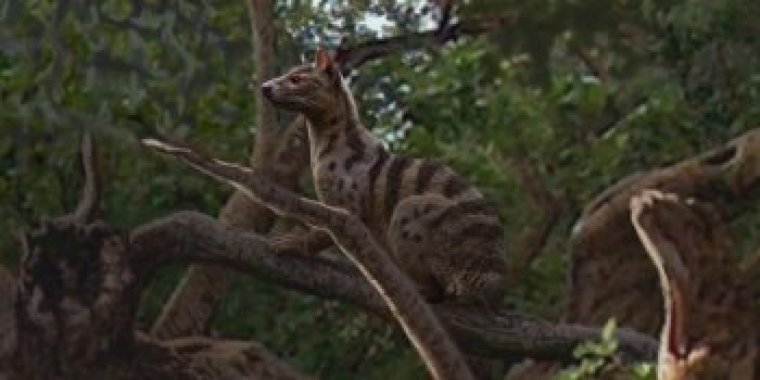| News / Science News |
Fossil discovery in Tanzania reveals ancient bobcat-sized carnivore
Paleontologists working in Tanzania have identified a new species of hyaenodont, a type of extinct meat-eating mammal.

Paleontologists have identified a new species of hyaenodont. ![]()
After the extinction of the non-avian dinosaurs 66 million years ago, hyaenodonts were the main predators on the African continent. The newly discovered animal is called Pakakali rukwaensis, the name derived from the Swahili term "pakakali," meaning "fierce cat," and "rukwaensis," the word for the Rukwa Rift region of the Great Rift Valley in southwestern Tanzania.
Between 23 and 25 million years ago, newcomers arrived in Africa -- the first relatives of modern dogs, cats and hyenas -- where they coexisted with hyaenodonts for millions of years. But eventually, hyaenodonts went extinct.
The shift from hyaenodonts to modern carnivores in Africa is like a controlled experiment.
We start with only hyaenodonts. Then the relatives of cats and dogs arrive. They coexist for a few million years, then the hyaenodonts are driven to extinction and we're left with 'The Lion King.' With Pakakali, we can start to unravel that extinction.
The new fossil helps researchers unravel extinction dynamics for predatory mammals stalking African ecosystems of that long-ago time.
The new hyaenodont species was discovered in the same 25 million-year-old rocks as the oldest fossil evidence of the split between Old World monkeys and apes. At that time, the ecosystem was undergoing dramatic climate and tectonic upheavals as Africa collided with Eurasia and the modern East African Rift System formed.
The fossil gives paleontologists a glimpse of hyaenodont anatomy before modern carnivores invaded the continent, revealing that Pakakali was about the size of a bobcat.
Based on the findings of the study, hyaenodonts may have been pushed to become more specialized meat-eaters due to competition from other species. That dietary specialization may have made hyaenodonts more vulnerable to extinction in the changing African ecosystem by leaving them with fewer food choices. (National Science Foundation)
YOU MAY ALSO LIKE




